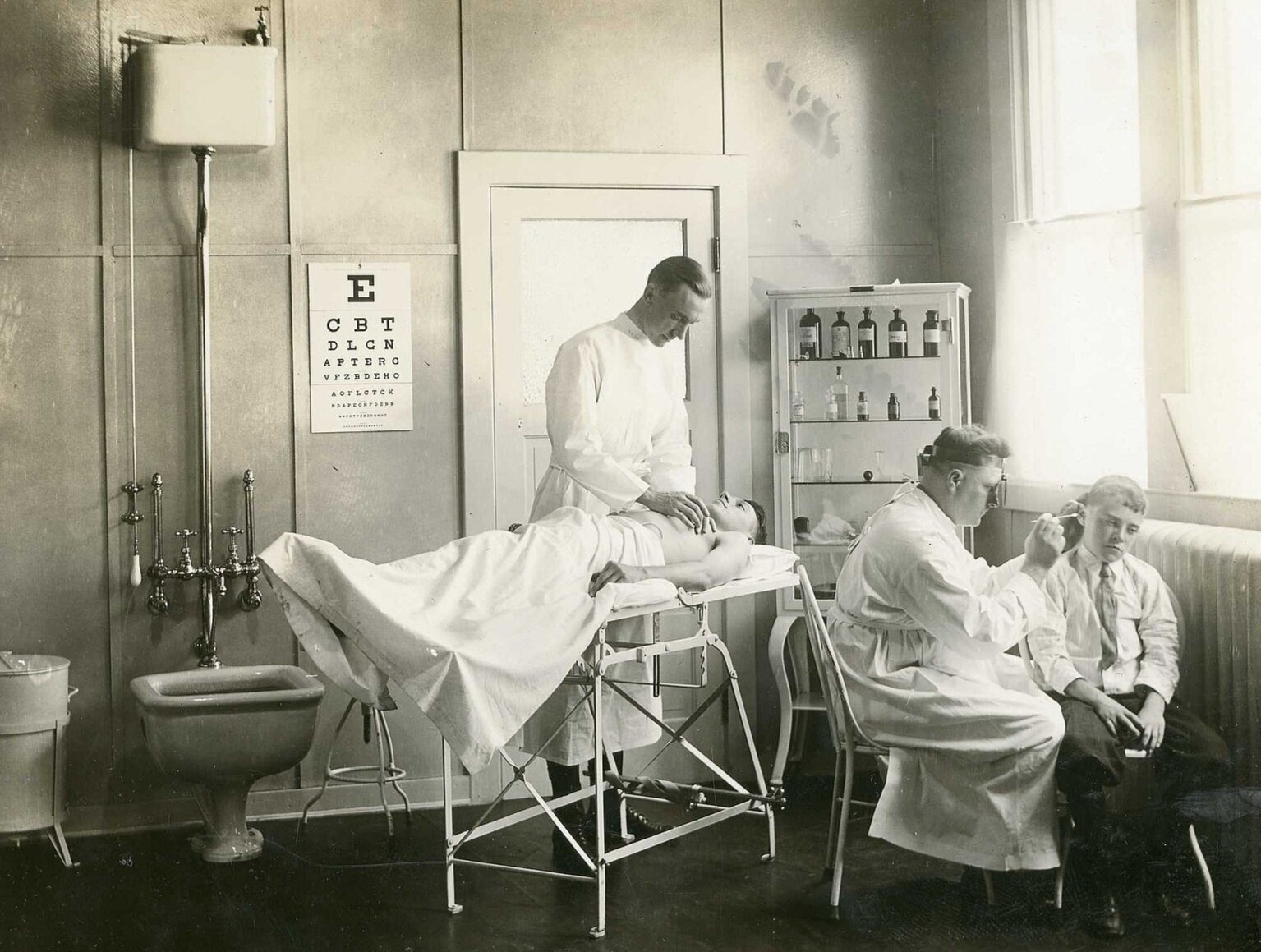Tactile Fremitus: Lost in Translation
A physician palpates for tactile fremitus as part of a physical exam during World War I, Washington DC. Image credit: Wikimedia Commons.
Mark Twain said “Be careful reading medical texts, you may die of a misprint” Perhaps he should have also warned about mis-translations too.
One conspicuous example of a mistranslation turned myth is when students are instructed to have a patient repeat “ninety nine” while feeling for tactile fremitus. The principle is that alveoli filled with fluid will conduct sound from the larger airways better than alveoli filled with air. By having the patient phonate with a diphthong sound, low frequency (< 80 Hz) sound is produced, which produces the vibrations of fremitus. In the pre-radiograph (and pre-ultrasound) era this was a highly useful way to identify consolidation within the lung.
The problem is that ninety nine doesn’t work well because ninety isn’t a diphthong. Imitation of the act of physical exam without understanding the reason explains this long perpetuated misperception. As described by William Dock:
When our medical ancestors studied in Austria or Germany, they observed that physicians asked patients to say “neun und neunzig” to evoke fremitus over the thorax. When they came home they taught their patients to say “ninety-nine,” thus translating literally, but not phonetically, what they had heard. This was a serious error, since their teachers would have asked patients to say: nein nein, if that was the sound they had wanted… Neun und neunzig is pronounced noyn unt noynzig and the ‘oy’ is what it takes to evoke a palpable, low-pitched vibrations, most effectively transmitted from the larynx to the rib-cage. “Nein, nein” and “ninety nine” are high pitched sounds, useless for evoking fremitus.
(It’s highly worth reading the whole article for the history of other pulmonary terms translated into English, such as râles and bruits.)
If you want to elicit tactile fremitus, the better way to produce the desired low frequencies is by having the patient say an English diphthong like “boogie” “boogie” “toy” “boy” or “boat”. Or if they know the song “99 Luftballons”, you could always have them sing it in German.


